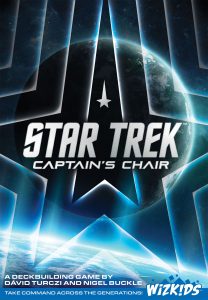 If you took a survey of a fan’s favorite Star Trek captain, I’m guessing it will be a two-horse race between Picard and Kirk. Despite there being a whole host of awesome captains from Star Trek lore, those two are the ones that have captured the glory. For myself, I’d go with Captain Sisko (don’t @ me). Deep Space 9 was a great series, and Sisko was someone you didn’t want to mess with.
If you took a survey of a fan’s favorite Star Trek captain, I’m guessing it will be a two-horse race between Picard and Kirk. Despite there being a whole host of awesome captains from Star Trek lore, those two are the ones that have captured the glory. For myself, I’d go with Captain Sisko (don’t @ me). Deep Space 9 was a great series, and Sisko was someone you didn’t want to mess with.
Circling back to today’s review, we are going to be looking at Star Trek: Captain’s Chair, a new game designed by Nigel Buckle and Dávid Turczi. If those names sound family, it’s because they have teamed up before, notably on Voidfall and the Imperium line of games. It’s that last line that’s relevant because Star Trek: Captain’s Chair is somewhat based on the mechanics of Imperium. So set your phasers to fun as we check out their latest offering.
Gameplay Overview:
If you’ve ever played a game of Imperium (Classics, Legends, Horizons), then you probably will have a good idea for the complexity level of Star Trek: Captain’s Chair. Spoiler Alert: this is not a light game. With that in mind, I’m only going to give you a brief overview of the gameplay, if you want the full ins and outs, you can download a PDF of the rulebook here.
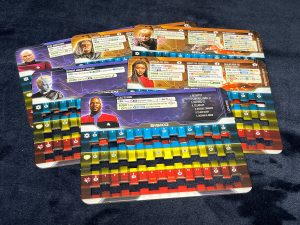
Star Trek: Captain’s Chair is played over a variable number of rounds. What’s important to know is that this game only plays with 1 or 2 players. Each player will control one of 6 captains from the Star Trek Universe: Picard, Sisko, Burnham, Koloth, Sela, and Thy’lek Shran. Each captain has their own unique deck, along with a set of reserve and development cards.
One your turn, you first check if you have control of any neutral planets. Planets are controlled by sending ships and away teams there. If you do, you add the planet to your tableau, activating any control powers.
Then you enter the action phase. Each card has 2 ways you can use them. The first is for their “play” effect if they are in your hand. This usually lets you move ships around, beam crew to ships or planets, buy new cards from the market, or get rid of incidents. Sometimes these actions cost an action token (you get 3 per turn), and other times they don’t.
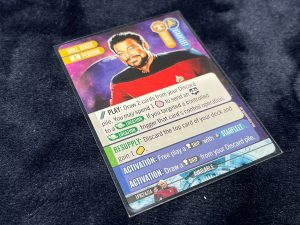
The second way a card can be used is for its activation power. These are similar to the play actions but can only be used while the card is deployed into your tableau. Some of them are passive as well (like increased hand size). Your captain, Planets, and Ships are the easiest ones to get into play. You are also allowed to have one duty officer in play as well.
Your turn ends with a cleanup phase. This will refresh your cards, remove a token from the Stardate card, and draw back up to your hand size. This last part is important because when you need to reshuffle your deck, you can gain the top card of your reserve deck. Once that deck runs out, you can start buying your powerful development cards.
The game ends when either the incident deck runs out (much more rare), or all the Stardate cards have been emptied of victory points. Players will gain points from several sources, and the player with the most points wins.
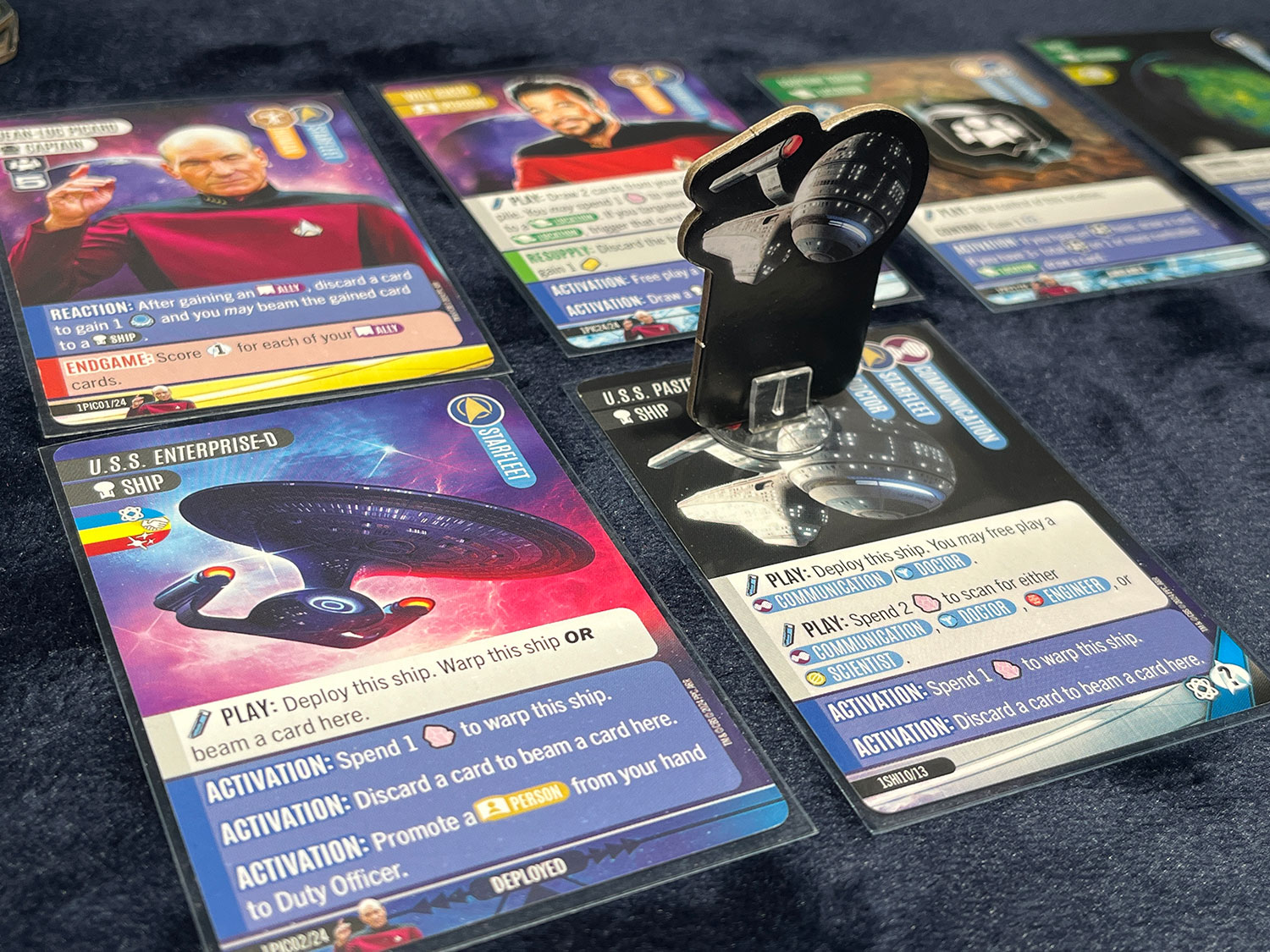
Game Experience:
I went into Star Trek: Captain’s Chair pretty fresh. I have never played an Imperium game (although I have heard of them) and didn’t even know the mechanics here were based on that series. I’ll admit though, struggled at the start to learn the game. I read the rulebook, a couple of times, and had a general feel for it. But I eventually wanted a gameplay video online because the overall gameplay loop just wasn’t clicking.
But eventually, I got it, and things started to flow smoothly. I played a few games, and then a few more, and a few more after that. I love the game—and for those who haven’t seen it, it even came in as my #3 board game of 2024. I really appreciated how unique each of the 6 captains’ decks feel. Not only do they have their own cards, but they are one point with the theme of their captains. Picard is heavily into diplomacy, Sela and Koloth are both very attack and aggressive, and Burnham must deal with inert dilithium.
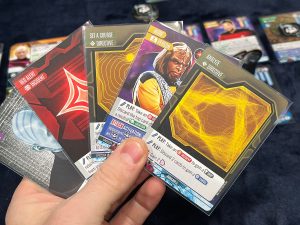
But this is one of those games where, while the mechanics don’t change, how you play each character will feel pretty different. Thankfully, the game includes a basic solo mode where you don’t even face off against a bot, which gives you a chance to learn the decks interstices. I’m glad that’s there because the few times I jumped straight into 1v1 or 1vBot it definitely didn’t play at peak skill. But once you start learning what cards are in your various decks, and where your strengths lie, there is a lot you can do to generate points.
The deck-building aspect of the game is also really interesting. In most deck-building games, you want to acquire a lot of cards at the start of the game (because your starter deck is pretty generic). But with Star Trek: Captain’s Chair, you gain a free reserve card whenever you cycle your deck, which are cards tailored to your captain. However, there are 4 different types of market cards, and many times your missions will focus on specific keywords on those, so you also don’t want to ignore them. So, it’s a fine balance of what neutral cards to buy vs how fast can you cycle your deck to get those reserve and development cards.
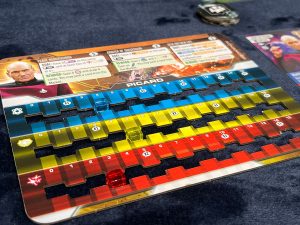
And I haven’t even touched on the track specialties yet. Each captain has 3 tracks to advance on: research, influence, and military. Most cards you buy will either have a fixed number of victory points or be worth the multiple on one of the aforementioned tracks. So that research track, if you get it to 5x at the end of the game, all of a sudden, each research card you bought are now worth 5vps each.
And that’s one of the fun things about Star Trek: Captain’s Chair, other than trying out how each different captain plays, there are a lot of ways to score points. Do you want to focus on a specific track and the accompanying card color? Or maybe you want to move them all up and diversify your cards. You can even not pay that much attention to them, and then go for the straight VP earning cards and your captain’s missions. There is a lot to unpack with Star Trek: Captain’s Chair, so you’ll have plenty of content to dive into.
Honestly, my only real complaint with the game (other than the lack of Captain Kirk) is just the learning curve. The rulebook could have used more gameplay examples or even a tutorial book. Because the game isn’t actually that hard, it’s just a complex game with a lot of keywords. And some of the mechanics aren’t quite what you are used to. But wrap your head around the system and you’ll be rewarded.
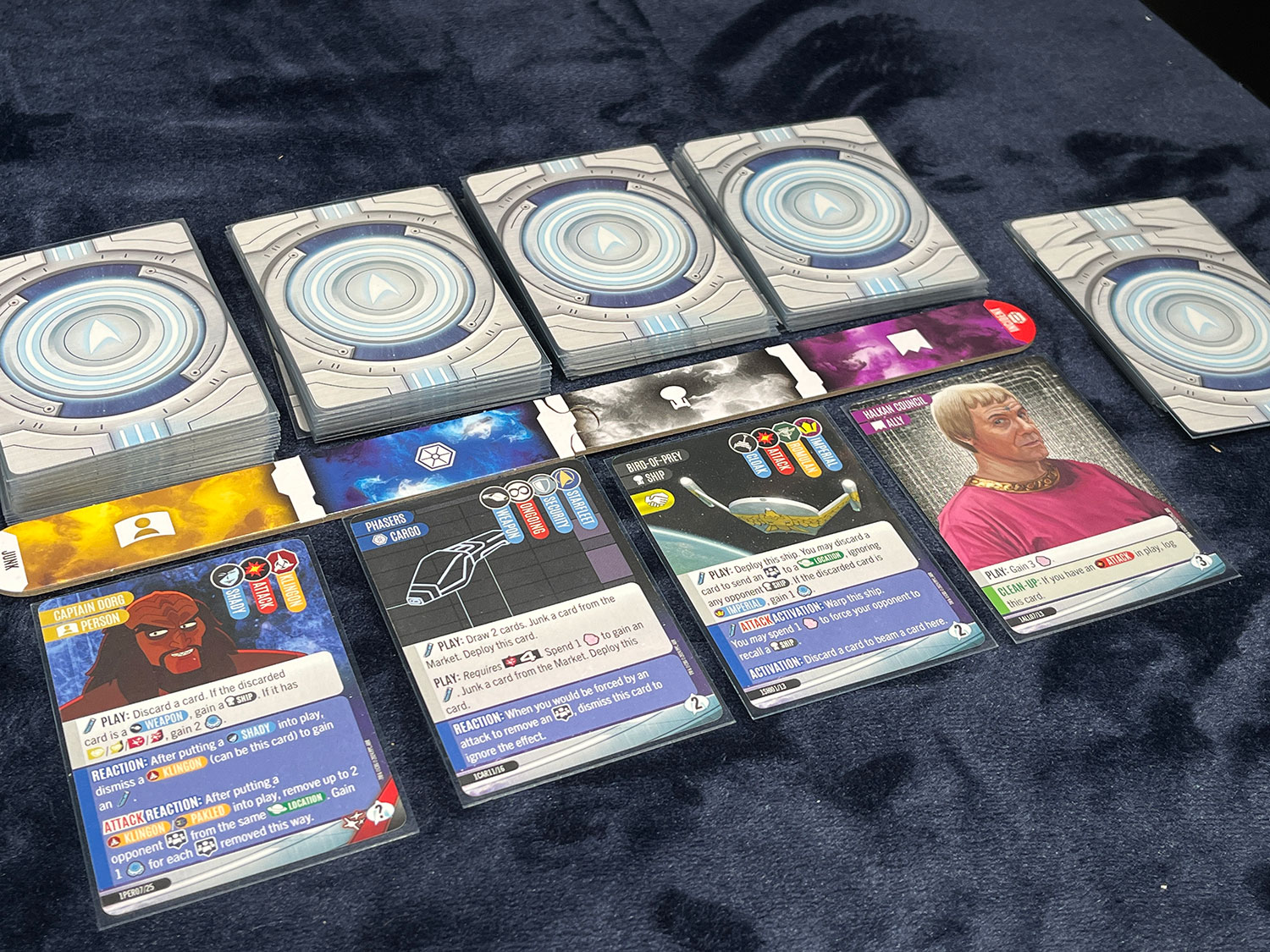
Final Thoughts:
Star Trek: Captain’s Chair was a surprise hit for me in 2024. It’s a game that was only passively on my radar, but once I sat down to play it, I was all in. I’ve tried every captain, both cadet mode and also vs bot (or another player). And each one has so much depth, and so many great thematic ties, that I keep wanting to play again. I hope this line does well, because I’d love to see some more captains via expansions. But for fans of the Star Trek series, if you are ok with the rules overhead, this is a must own!
Final Score: 4.5 stars – A chunky Star Trek themed game with tons of replay value and rewarding gameplay.
 Hits:
Hits:
• Tons of replay value
• Thematic use of each captain
• Plays great both solo and versus
• Deep, rewarding gameplay
• Many ways to score points
Misses:
• Somewhat steep learning curve
Source: Board Game Quest



